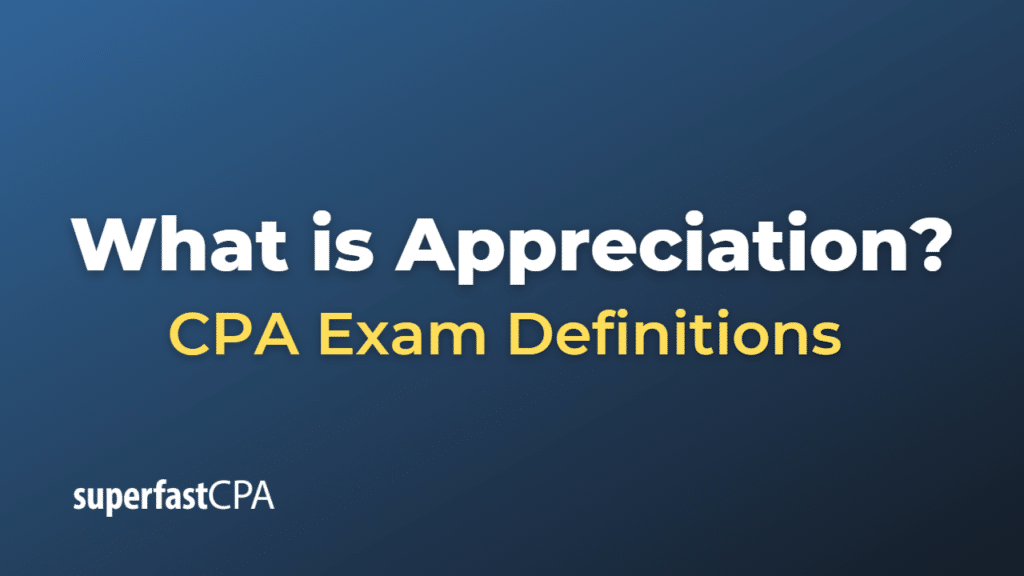Appreciation
In accounting, appreciation refers to the increase in the value of an asset over time. Appreciation can occur due to various factors such as market demand, economic conditions, scarcity, or improvements made to the asset. Appreciation is the opposite of depreciation, which represents the decrease in an asset’s value over time, typically due to wear and tear or obsolescence.
Appreciation is usually realized when the asset is sold or disposed of, resulting in a gain. In some cases, appreciation can be recognized periodically if the asset’s value is expected to increase over time, and the increase can be reasonably estimated. However, it’s important to note that appreciation is generally not recognized for financial reporting purposes under the historical cost principle, which requires assets to be reported at their original cost minus accumulated depreciation.
For tax purposes, appreciation may have implications for capital gains taxes when the asset is sold, as the difference between the sale price and the original cost (adjusted for any depreciation) could result in a taxable gain.
Example of Appreciation
Let’s consider a real estate property as an example.
Suppose you purchased a commercial property for $500,000 five years ago. Due to improvements you made to the property and the overall growth of the area, the property’s value has increased over time. After five years, the property is now worth $650,000. The appreciation in this case is the increase in the property’s value, which is $150,000 ($650,000 – $500,000).
In this example, the property experienced appreciation of $150,000 over the five-year period. If you decide to sell the property at the current market value of $650,000, you would realize a gain of $150,000, which may be subject to capital gains tax depending on your jurisdiction and tax laws.
It’s important to note that this appreciation wouldn’t generally be recorded in your financial statements under the historical cost principle. The property would still be reported at its original cost of $500,000, minus any accumulated depreciation if applicable, in your balance sheet. The appreciation would only be recognized when the property is sold or otherwise disposed of.












